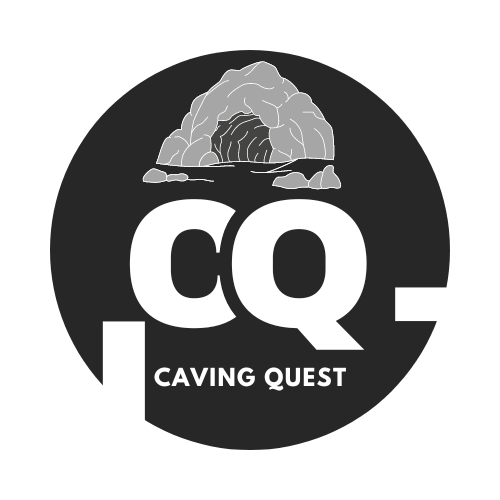Caving, or spelunking, is an exciting adventure that lets you explore the hidden wonders beneath the earth’s surface. However, many myths about caving often scare people away from this thrilling activity. These myths can make caving seem more dangerous or difficult than it is, leaving people feeling unsure and hesitant. But don’t worry! We’re here to clear up these misconceptions and show you the true beauty of caving.
The thought of going into a mysterious, dark cave can be frightening to a lot of people. You may be concerned about becoming lost, coming across hazardous animals, or dealing with harsh circumstances. These worries are reasonable, but they’re frequently stoked by false narratives and myths. The good news is that caving can be a safe and enjoyable experience if you know what to do and are prepared.
We’ll examine some of the most widespread misconceptions about caving in this post, dispel any false information, and provide you the courage to explore caves with excitement rather than terror. To find out more, continue reading!
Myth #1: Caving Is Extremely Dangerous
A common misconception about caving is that it’s very risky. A common misconception about caving is that it’s a dangerous activity where you constantly run the risk of becoming trapped, hurt, or worse. Like any outdoor activity, caving has risks, but these can be reduced with the right preparation, knowledge, and gear.
The Truth: Caving can be as safe as you choose. You can greatly lower the risks by using the proper equipment, going with experienced cavers, and adhering to safety regulations. Numerous caverns have designated routes that are safe for exploration and are well-mapped. Caving can be an exhilarating and safe experience, provided you know your limits and respect the environment.
Myth #2: Caves Are Filled with Dangerous Animals
The idea that caves are rife with dangerous creatures, such as giant spiders, snakes, and bats, ready to attack naive adventurers is another widespread misconception. Although horror films and stories frequently reinforce this myth, the truth is very different.
The Truth: The majority of cave animals are safe and fear you more than you fear them. For instance, bats are timid animals that won’t frighten you if you leave them alone. Even in rare cases when they are found, snakes prefer to stay away from people in caves. The important thing is to avoid disturbing the natural inhabitants of the cave and to treat them with respect. This will reveal that the wildlife in caves enhances the experience rather than poses a threat.
Myth #3: Caving Is Only for Extreme Adventurers
A common misconception is that caving is only for the most adventurous and physically fit people. They believe that to even consider exploring a cave, one must be an accomplished climber or possess unbreakable nerves. Beginners or people who don’t consider themselves extreme sports enthusiasts may become discouraged by this myth.
The Truth: Everyone should go caving! There are caverns for every skill level, from simple strolls to trickier crawls and climbs. Beginners don’t need any special equipment or skills to begin with; they can start with basic cave tours. You can explore more difficult caves as you get more experience and self-assurance. Regardless of your skill level, the caving community is friendly and encouraging, and there are many resources available to get you started.
Read about the history of caving.
Myth #4: You Can Easily Get Lost in a Cave
A common fear that prevents many people from trying caving is getting lost in a cave. It is horrifying to consider yourself lost and alone in a pitch-black labyrinthine setting. This myth is frequently exaggerated, even though it is possible to get lost if you’re not careful.
The Truth: The majority of public caves have obvious routes and are signposted. It’s crucial to do your homework, bring a map, and go with an experienced hiker before venturing into a cave. The use of modern technology, like GPS and mapping applications, facilitates safe cave navigation. You can explore caves without worrying about getting lost as long as you stay on designated trails and pay attention to your surroundings.

Myth #5: Caving Requires Expensive Gear
Some believe that you need to invest in expensive gear to start caving, which can be a barrier for those who are just curious about the activity. This myth might make caving seem inaccessible to the average person.
The Truth: Even though the proper gear is essential, starting a caving hobby doesn’t have to cost a fortune. For novice caving excursions, basic equipment like a headlamp-equipped helmet, sturdy shoes, and loose-fitting clothes is usually sufficient. You can spend money on specialized equipment like ropes and harnesses as you advance and tackle more difficult caverns. Additionally, a lot of caving clubs and organizations rent out equipment, which makes getting started simpler and less expensive.
Conclusion
Caving is a fascinating and rewarding activity, but it’s often misunderstood due to the myths surrounding it. By debunking these myths about caving, we hope to show you that caving is not as dangerous, mysterious, or exclusive as it might seem. With the right preparation, respect for the environment, and a willingness to learn, anyone can enjoy the wonders of caving.
So, don’t let myths hold you back. Take that first step into the underground world, and discover the beauty and adventure that awaits you. Caving is an experience that connects you with nature in a unique way, and once you try it, you might just fall in love with the thrill of exploration.
